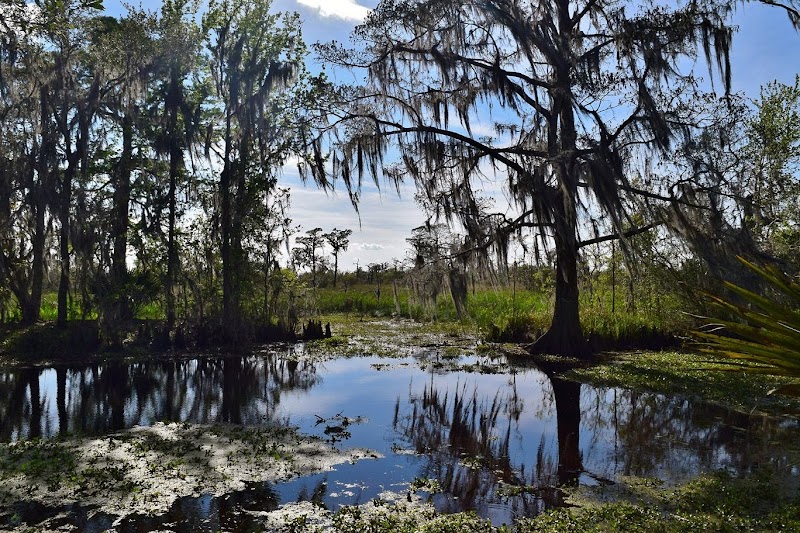
Birding the Wilds of Bayou Sauvage: A Practical Guide to Belle Chasse’s Untamed Skies
Experience the untamed wetlands of Bayou Sauvage in Belle Chasse, Louisiana, where expansive marshes and tangled forests invite birders to witness some of the South’s most vibrant avian life. This practical guide prepares you to navigate the terrain, understand local bird species, and plan your visit efficiently.
Start Early to Catch Peak Bird Activity
Birds are most active around dawn, so plan your tour to begin just after sunrise to maximize sightings and avoid the midday heat.
Wear Waterproof, Sturdy Footwear
Terrain includes mud, wet roots, and swampy boardwalks; waterproof boots with good traction will keep you steady and dry.
Bring Plenty of Water and Bug Repellent
The bayou heats up quickly, and mosquitoes swarm in warmer months—hydration and insect protection are must-haves.
Use Binoculars and a Louisiana Waterbird Guide
Scanning the sky and among tree branches demands binoculars. A field guide focused on local species greatly enhances your experience.
Birding the Wilds of Bayou Sauvage: A Practical Guide to Belle Chasse’s Untamed Skies
Bayou Sauvage National Wildlife Refuge, sprawling across the wetlands near Belle Chasse, Louisiana, offers a birding experience both raw and accessible. This refuge, one of the largest urban wildlife habitats in the U.S., challenges visitors with its swampy trails and open marshes where birds reign fiercely. Your tour here is less about tame strolls and more about engaging with a landscape deeply alive—forests draped in Spanish moss, waters that nudge and invite, and skies where wings cut precise shapes.
Cover roughly 9 miles of diverse terrain, including boardwalks and dirt trails that range from flat marshland to forest edges. Elevation gain is negligible, but the shifting footing over wetland roots and occasional muddy patches demands steady shoes and attention. Expect stretches where the wind plays like a conductor, subtle rustlings from the marsh grass announce hidden songbirds, and distant wings flash vibrant blues and reds.
Plan early morning visits to catch the chorus at its peak, or late afternoons when osprey and hawks circle with purpose overhead. Hydrate well, especially in warmer months, and pack lightweight waterproof footwear—the bayou’s moods change with the tide, and sneakers alone won’t cut it. Bring binoculars and a field guide for Louisiana water and wading birds: great egrets, ibis, herons, and the elusive prothonotary warbler await.
Respect the environment’s fierce independence. The bayou doesn’t unfold on a schedule—it tests patience and rewards the prepared. Trails are well-marked but sometimes narrow, giving way to thick reeds and swamp hardwood groves. Expect to dodge mosquitos, respect nesting areas, and move quietly to avoid startling your feathered quarry.
With every step, the refuge’s waterways dare you to follow, currents twisting unseen beneath lily pads and cypress knees. Bird calls punctuate the silence, each note a claim on this complex habitat. The Bayou Sauvage birding tour is an invitation to observe not just birds, but a living ecosystem in flux—an adventure that blends curiosity, respect, and careful planning into a rewarding day spent in the company of nature’s stewards.
Nearby Trips
All Adventures
Boat Charters
Water Activities
Adventures near Belle Chasse, Louisiana
Discover the unique and memorable adventures that make Belle Chasse, Louisiana special.
Frequently Asked Questions
Are guided birding tours available in Bayou Sauvage?
Yes, local outfitters and the refuge occasionally host guided birding tours, especially during peak migration seasons, providing expert insights and equipment rentals.
What bird species are commonly spotted here?
Visitors can expect to see great egrets, white ibis, prothonotary warblers, red-shouldered hawks, and during migration, a variety of shorebirds and songbirds.
Is the refuge accessible year-round?
Bayou Sauvage is open all year, but the experience varies seasonally, with winter offering clear birding opportunities and summer requiring early starts to avoid heat and mosquitoes.
Are there any restrictions to protect wildlife during tours?
Yes, visitors must stay on designated trails, avoid disturbing nests, and keep noise levels low to maintain a safe habitat for nesting and migrating birds.
Where is the best place to park and start the birding tour?
The headquarters parking lot near Belle Chasse provides convenient access to the main trails and interpretive signs to orient visitors.
How should I prepare for mosquitoes and other insects?
Use insect repellent containing DEET or natural alternatives, wear long sleeves and pants especially at dawn and dusk, and consider bringing a head net if particularly sensitive.
Recommended Gear
Waterproof Hiking Boots
Protects feet from mud and standing water while offering traction on slippery surfaces.
Binoculars
Enhances bird viewing ability across marshes and tree canopies.
Insect Repellent
Essential to deter mosquitoes and other biting insects common in warmer months.
Lightweight Waterproof Jacket
Useful for sudden rain showers that can swiftly dampen the trail experience.
Local Insights
Hidden Gems
- "The observation tower near the refuge’s east entrance offers sweeping views rarely crowded, perfect for quiet contemplation and spotting soaring birds."
- "A small freshwater pond off the Bayou Sauvage trail shelters wood ducks and is a favored spot for local wildlife photographers."
Wildlife
- "Watch for nutria dragging wet roots through the marsh, black-crowned night herons stalking twilight, and occasional visits by river otters disrupting the water’s surface."
History
"Bayou Sauvage was established in 1990 to protect breeding grounds for migratory birds and preserve one of the last large urban wetlands in the continental U.S. It reflects a community-held commitment to coexistence with nature."
